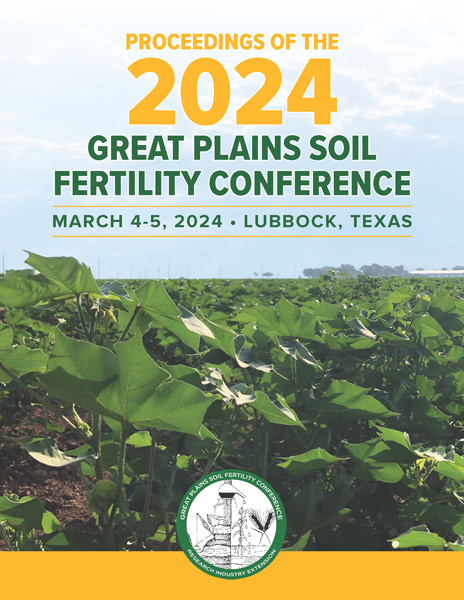Conference Proceedings Available!
The 2024 Great Plains Soil Fertility Conference Proceedings Book is now available! Click the link below to view the full document!
Proceedings
Authors
| Filter results1 paper(s) found. |
|---|
1. Implications of Nutrient and pH Stratification in No-tillStratification of non-mobile nutrients in no-till is not a surprising result. However, this presentation will share the findings of soil sampling a series of long-term NPK fertility studies which have been in no-till production for more than ten years. This data set includes a non-treated check. Beyond stratification of nutrients we found significant stratification of OM, soil acidity, and Al3+. The impacts of stratification in a production system will be discussed along with potential problems... B. Arnall, R. Sharry |
